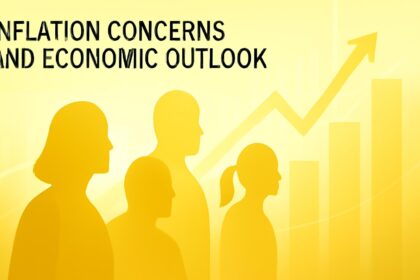Federal Reserve Poised for Another Rate Cut
The Federal Reserve is widely expected to reduce borrowing costs once again this Wednesday, following September’s quarter-point cut. This move would bring the federal funds rate to a target range between 3.75% and 4.00%, continuing the central bank’s efforts to support economic growth amid evolving financial conditions. The federal funds rate, set by the Federal Open Market Committee (FOMC), represents the interest rate at which banks lend to each other overnight. Although this rate does not directly determine consumer borrowing costs, it influences a broad spectrum of loan products across the economy.Uncertain Path Ahead Beyond December
The FOMC has signaled expectations for an additional rate cut in December, but the trajectory after that remains unclear. Political dynamics may also play a role, as President Donald Trump has publicly advocated for more aggressive rate reductions and hinted at a potential replacement for Federal Reserve Chair Jerome Powell by year-end.Not All Consumer Rates Will Decline Equally
Despite consecutive rate cuts, many consumer borrowing rates are likely to remain elevated for the time being. Mike Pugliese, senior economist at Wells Fargo Economics, explains that the Fed does not uniformly cut all interest rates.“The Fed is not cutting every single interest rate that exists in the world,” said Pugliese. “Short-term floating rates are more sensitive to Fed changes, whereas long-term fixed rates, like 30-year mortgages, are influenced by inflation and broader economic factors.”Credit Card Rates Remain High Despite Fed Cuts
Almost half of American households carry credit card debt, with average interest rates exceeding 20%. Because credit card rates are typically variable and tied closely to the prime rate—which moves in tandem with the federal funds rate—they are expected to decrease following Fed cuts, but only marginally. Matt Schulz, chief credit analyst at LendingTree, cautions that credit card APRs will not dramatically improve overnight, as issuers maintain elevated rates to offset risks associated with riskier borrowers.“Even if the Fed accelerates rate cuts in the coming months, credit card rates aren’t going to go from awful to amazing overnight.”
Matt Schulz, LendingTreeLimited Relief for Auto and Home Loan Borrowers
Auto loan interest rates, which are fixed for the term of the loan, may offer some relief to prospective car buyers if borrowing costs decline further. Currently, the average rate on a five-year new car loan hovers near 7%. Jessica Caldwell, head of insights at Edmunds, notes that while rate cuts won’t drastically reduce monthly payments, they can improve overall buyer sentiment, potentially stimulating demand. Long-term mortgage rates, such as 15- and 30-year fixed loans, are less sensitive to Fed decisions and more dependent on Treasury yields and inflation expectations. However, anticipation of future cuts might exert downward pressure on mortgage rates, encouraging some buyers to re-enter the housing market. Adjustable-rate mortgages (ARMs) and home equity lines of credit (HELOCs), which are tied directly to the prime rate, will adjust more quickly in response to changes in the federal funds rate.FinOracleAI — Market View
The Federal Reserve’s upcoming rate cut signals continued accommodative monetary policy aimed at sustaining economic momentum. However, the uneven impact across consumer loan products highlights the complexity of monetary transmission in current market conditions.- Opportunities: Slightly lower borrowing costs could improve consumer sentiment and spending, particularly in auto sales and adjustable-rate home loans.
- Risks: Persistent high credit card rates may constrain household budgets and limit discretionary spending.
- Uncertainty around future Fed policy and political influence adds volatility to market expectations.
- Long-term fixed-rate borrowing remains influenced by broader economic factors, reducing the immediate effect of Fed cuts on mortgage affordability.













